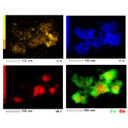
Researchers have developed a new procedure for light olefins synthesis using Fischer-Tropsch reaction. They added tin and antimony to the iron catalysts, to increase their activity. This process, called promotion, resulted in a major increase in the reaction rate. Fischer-Tropsch synthesis provides an important opportunity for utilization of biomass and plastic waste for fuels and chemicals production. The studies performed in this work enable a clear understanding of the catalytic phenomena and open perspectives for the catalyst improvements. In-situ X-ray absorption spectroscopy performed at the CLÆSS beamline of the ALBA Synchrotron played a crucial role to study the catalysts and promoters under reaction conditions.
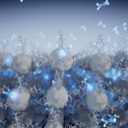
Researchers at IMDEA Nanociencia control the weakest van der Waals forces in a fullerene C60 compound by applying an external stimulus. The study represents a landmark achievement in the field of Supramolecular Chemistry, where weak forces can play a crucial role in chemical reactions. This strategy has allowed for the first time to selectively and in a controlled manner hydrogenate the C60 and may have relevant implications for hydrogen storage. Researchers used the XALOC beamline at ALBA to determine the crystal structure of the compound.

Primary school teachers can sign up their groups of 10-12 years old children for the fourth edition of ALBA Mission at www.misionalba.es. After the great success of the past editions with 10,000 students from all over the country, this school-year 500 available places are offered for this educational project launched by the ALBA Synchrotron. With the experiments proposed by ALBA staff, kids enter into the research world and learn science related to the Synchrotron.

Cadmium and mercury are toxic metals that accumulate in the environment and represent a threat to photosynthetic organisms of polluted ecosystems. A research team from the Autonomous University of Madrid has studied the effects of these harmful metals in the microalga Chlamydomonas reinhardtii, a soil-isolated unicellular photosynthetic microorganism. Using synchrotron infrared microspectroscopy at MIRAS beamline in ALBA, researchers have identified multiple metabolic alterations in the main types of biomolecules (carbohydrates, proteins and lipids) of the microalga caused by cadmium and mercury. These insights help to optimize approaches for metal descontamination.
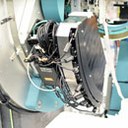
A new Position Sensitive Detector has been installed in the ALBA Synchrotron beamline devoted to high-angular resolution and high throughput standard powder diffraction. The project is co-funded by the Spanish government through the 2019 call for Scientific-Technical Equipment.
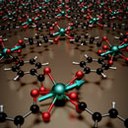
The magnetism of lanthanide-directed nanoarchitectures on surfaces can be drastically affected by small structural changes. The study carried out in a collaboration between researchers from IMDEA Nanociencia and BOREAS beamline at ALBA reports the effect of the coordination environment in the reorientation of the magnetic easy axis of dysprosium-directed metal-organic networks on Cu(111). The authors show that the magnetic anisotropy of lanthanide elements on surfaces can be tailored by specific coordinative metal-organic protocols.
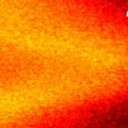
The first ARPES measurement is a fundamental step in the commissioning of the LOREA beamline. The chosen sample was bismuth-telluride, a thermoelectric material capable of converting electricity into temperature difference and vice-versa. LOREA, co-funded with ERDF funds, is expected to be receiving the first users by October 2021.
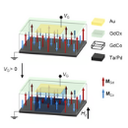
Manipulating magnetism by electrical means is central to spin-based data storage and manipulation. Achieving voltage driven 180° magnetic switching is desirable for spintronic device applications because of the potential low power consumption. A study lead by researchers from Massachusetts Institute of Technology (US) with collaborators from University of Minnesota (US), Chemnitz University of Technology (DE), Korea Institute of Science and Technology (KR) and the ALBA Synchrotron demonstrates 180° magnetization reversal in the absence of external magnetic fields by voltage induced hydrogen loading into ferrimagnets in an all-solid-state structure. The reversal is realized by changing the relative magnitude of sublattice magnetizations through hydrogen loading into a rare earth–transition metal ferrimagnet, which was revealed using XMCD measurements at the BL29 beamline in the ALBA Synchrotron. The results have been published in Nature Nanotechnology.
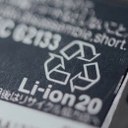
A new work published in Nature Materials demonstrates that a novel class of materials, namely transition metal halides, can be now employed as Li-ion batteries electrodes by using superconcentrated electrolytes instead of regular diluted electrolytes in which they dissolve. The study is led by the Collège de France and has used the MSPD beamline of ALBA to monitor the evolution of the metal halides structures upon cycling in a battery, which was crucial for the study.
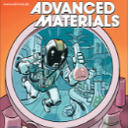
A team of researchers demonstrated that 2D porous crystalline molecular frameworks can be grown with excellent control over their morphology and homogeneity by using a custom-made microfluidic device. This approach recreates on Earth the microgravity environment of laboratories on the International Space Stations. Measurements at the NCD-SWEET beamline at the ALBA Synchrotron allowed studying crystallinity, structure and orientation of the created 2D material.
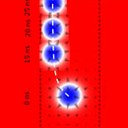
A group of researchers from France has been able to create and guide skyrmions in magnetic tracks. These nanoscale magnetic textures are promising information carriers with great potential in future data storage and processing devices. Experiments at the CIRCE-PEEM beamline of the ALBA Synchrotron enabled to image how skyrmions move along tracks written with helium ions.
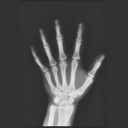
A study from several Italian institutions and the ALBA Synchrotron suggest crystalline calcium carbonate as a precursor of hydroxyapatite in the process of bone formation. Since hydroxyapatite is a mineral constituting 70% of the mass of bone, these findings may have potential applications in the development of new therapeutic approaches in bone cancer. Thanks to the MISTRAL beamline at ALBA, researchers were able to create a 3D tomogram of human cells and visualize calcium depositions inside them.
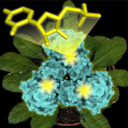
A research team from the Biomedicine Institute of Valencia (IBV-CSIC) and from the CIBER of Rare Diseases (CIBERER), in collaboration with the Universität Kaiserslautern in Germany, has studied the ATC protein, an essential enzyme for the biosynthesis of pyrimidines, the building blocks of the genetic material. The structural determination was carried out at the ESRF synchrotron and at the XALOC beamline of ALBA, devoted to macromolecular crystallography. The structural data, combined with other analysis, has allowed researchers to describe the functioning mechanism of the enzyme, opening the venue for new strategies to design herbicides and antitumoral compounds.

The user community of the ALBA Synchrotron was called to participate in a webinar session the last 30th of June. Users were able to learn about the status of the ALBA II project and how to contribute to its success. A call for new beamlines is now open. Proposals can be send until 6th of September 2021.
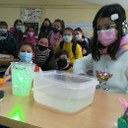
ALBA Mission, the science educational project of ALBA Synchrotron, closes its 3th edition, which has counted with 225 registered schools, 364 teachers, 503 classroom groups and more than 10.000 students all around the country. Students and teachers have highly valued the impact of the project in their classrooms, both at a motivational and learning level. Moreover, this school-year offered four new experiments about light and its properties.

Check out the last annual report, covering the most remarkable activities of 2020. How ALBA faced the pandemic and kept giving service to the user community, a selection of science highlights, technology reviews and a brief summary of last year.

MINERVA will be the 13th beamline of the facility and will be used to support the development of the ATHENA mission, the Advanced Telescope for High Energy Astrophysics that will reveal new insights about hot and energetic universe. The beamline project started on March 2020, the final beamline design has been approved today and it is to be ready to start operating in 2022.

The user community of the ALBA Synchrotron is called to participate in a webinar session next 30th of June 2021 from 09:30 to 16:05h, where the ALBA II project will be presented in detail. Registration is open to follow the event virtually by Zoom application.

The ALBA Synchrotron has actively participated in the Smart Agrifood Industry congress organised on the 25 and 26 of May by secpho, the Deep Tech cluster from South Europe, using their innovative virtual platform Secpholand. Several connections with companies were made during the event.
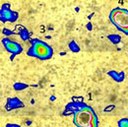
Researchers from the UAB and IDIBELL have analysed Alzheimer’s disease brain samples at the ESRF and ALBA Synchrotron to characterise two types of amyloid plaques with differences in metal ion composition and in their levels of oxidised lipids. The results could lead to new insights into the development of the pathology.
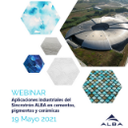
Around 40 people attended the industrial webinar organized by the ALBA Synchrotron where companies were able to know how to use synchrotron light for analyzing and improving materials such as cements, pigments and ceramics

From 1 to 3 June 2021, the director of the ALBA Synchrotron is participating at this global-scale conference, organised virtually this year for the first time.

In a recent publication, researchers from French and Spanish Institutions used the combination of two synchrotron light characterization techniques to study Chinese blue-and-white Ming porcelains, which are decorated under the glaze with Cobalt-based blue pigments, and produced during a one-step firing at high temperatures. They were able to identify the firing temperature by determining the porcelain’s pigments and the reduction-oxidation media conditions during their production. The approach they used can also be applied on a broad range of modern and archaeological ceramics to elucidate their production technology.
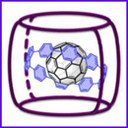
A Catalan-German collaboration has developed an innovative three-shell structure with the aim of improving future organic solar cells. XALOC beamline of the ALBA Synchrotron offered structural insights of this new system.
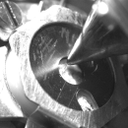
For the first time, it has been demonstrated that oxygen functionalities (epoxy, carbonyl, and lactone) on the carbon electrode surface do not affect the kinetics of one-electron oxygen reduction in aprotic media, but enhance both the rate of electrochemical lithium peroxide (Li2O2) formation and carbon degradation in Li+-containing electrolytes. The research has included analysis using synchrotron light at Elettra and ALBA facilities.
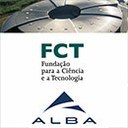
ALBA is receiving, until the 31st of May, applications for 4 Post-Doctoral positions in order to develop research projects that will involve Portuguese and Spanish scientific institutions, in the following scientific areas: biosciences, catalysis, batteries, and materials for energy and nanomaterials.
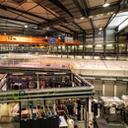
Undergraduate students can now apply till the 31st of May 2021 to do an internship at the ALBA Synchrotron during 2021-2022 course.
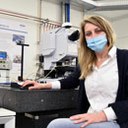
An experiment led by Tanja Ducic, scientist at the MIRAS beamline of ALBA, is analyzing live cells with synchrotron-based Fourier Transformed Infrared (FTIR) spectroscopy to identify crucial potential biomarkers in order to target them and to help develop new therapeutic strategies.
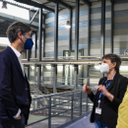
Jordi Solé Ferrando, Eurodeputy and Secretary of International Policy of Esquerra Republicana de Catalunya (ERC), visited the ALBA Synchrotron facilities on April 7, 2021. Accompanied by its director, Caterina Biscari, Solé highlighted the relevance of the infrastructure to transfer knowledge to the economy.
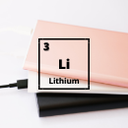
In a study published in Advanced Functional Materials, researchers show the synthesis optimization of NCM622 cathode material for Lithium-ion batteries, achieving both lower energy capacity cost and high cyclability. The results can be directly applied to production of better Li-ion batteries for modern electronics. Reaction was investigated using in situ X-Ray Diffraction technique at the MSPD beamline in the ALBA Synchrotron.
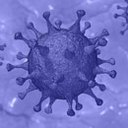
Large research facilities like the ALBA Synchrotron have become versatile infrastructures at the service of the scientific community to develop knowledge and join forces in the fight against the pandemic caused by Covid-19 and other diseases. On the World Health Day, ALBA takes stock of the experiments carried out in the last year that help to find answers to improve our living conditions.
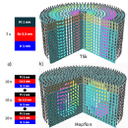
The combination of magnetic images from surface sensitive PEEM and bulk sensitive transmission X-ray microscopy supported by micromagnetic simulations, provided experimental evidence of the existence of the stabilization magnetic hopfion quasiparticles in magnetic multilayers.
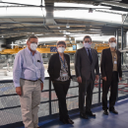
Manuel Muñiz Villa, State Secretary for Global Spain (Ministry of Foreign Affairs, European Union and Cooperation), and his team visited the ALBA Synchrotron facilities accompanied by its director, Caterina Biscari, who was also one of the protagonists of the #SpainforSure campaign launched by the State Secretariat. They took the opportunity to discuss Spain's technological diplomacy strategy for the future.
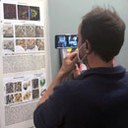
From 15th to 18th March, 19 participants of the European HERCULES 2021 school have delved into a wide variety of synchrotron techniques with the help of ALBA scientists. This course, running since 1991, has been held virtually combining theoretical and practical sessions.
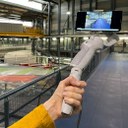
The ALBA Synchrotron is launching a program of virtual visits to continue its outreach work and to show what a synchrotron is and what it is used for. The visits can already be booked through the ALBA website and are aimed at high schools, universities, associations and research centers, among others.
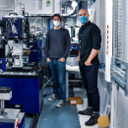
A team of scientists has shown that Bromine (Br) incorporation in polycrystalline cesium lead triiodide (CsPbI3) thin films, with composition CsPbI3-xBrx, modifies the crystal structure by changing the symmetry of the lattice. This change, in turn, governs the formation of the different, energetically favored textures within the thin film. Controlling grain orientations within polycrystalline all‐inorganic halide perovskite solar cells can help increase conversion efficiencies, which would represent great progress in the field of renewable energies. This discovery comes directly from synchrotron X‐ray diffraction experiments carried out at the ALBA Synchrotron and the European Radiation Facility in Grenoble.

A CSIC project reveals a new pharmacological site of the protein that is part of the roads that carry viruses and spread them in infected cells. The XALOC beamline of the ALBA Synchrotron contributed in determining the structure of this protein. Its discovery, thanks to the use of a new natural compound from cyanobacteria, opens the door to new drugs against viral infections or cancer.
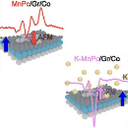
Researchers from the Sapienza University in Rome, in collaboration with the ALBA Synchrotron, have demonstrated a further pathway to tune the magnetic response of a metal-organic semiconductor molecule interfaced with a graphene-covered cobalt film. Organic molecules with a spin, coupled to a magnetic substrate, can be a key element in the development of future organic-spintronic applications.
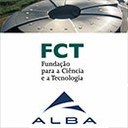
The proposed projects were reviewed by a team of international experts and four of the projects have been selected. The calls for the Post-doctoral positions associated with these projects will open very soon.
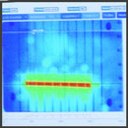
On the 12th and 13th of February 2021, the 10th beamline of the ALBA Synchrotron has received the first photons. The commissioning of the beamline ran very smoothly, reaching 250 mA in only four hours. NOTOS will be available for users in the next experiments' cycle starting in June this year, helping to solve problems in several scientific disciplines such as chemistry, catalysis, energy, nanomaterials, condensed matter and environmental science. The project is co-funded by the European Regional Development Fund (ERDF).
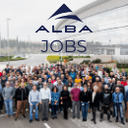
The web will be available for consulting and applying to the latest ALBA job offers, in addition to showing what is it like working at the ALBA Synchrotron and give visibility to its various professional profiles.
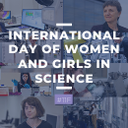
Headed by its director, the women at the ALBA Synchrotron are leading figures of the science that takes place in the scientific infrastructure. On the day that highlights the role of women in science, we reflect on the trajectory, projects and ideas of some of the women who are part of the ALBA Synchrotron.

Cadmium is a heavy metal considered one of the most toxic elements to which humans can be exposed. The present study identifies the processes that control the mobility of cadmium in soil-rice system, by means of isotope and X-rays absorption spectroscopy speciation analyses performed at Soleil and ALBA synchrotrons, at the CLAESS beamline.
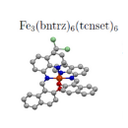
A research published in Advanced Materials studies the barocaloric properties of Fe3(bntrz)6(tcnset)6, a molecular material that contains a metal complex that undergoes an abrupt spin-state switching close to room temperature. This kind of materials, with giant calorific effect, are the best placed candidates to develop new efficient and environmentally friendly refrigerators that must replace current devices, which feature low efficiency and use hazardous fluids. Powder Diffraction measurements at high pressure and temperature were done at the MSPD beamline of the ALBA Synchrotron.
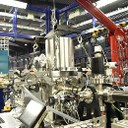
Scientists at leading European virology research organisations aim to demonstrate how imaging the whole internal structure of intact biological cells provides valuable information to understand the disease pathways of viruses and to aid the development of novel therapeutics.
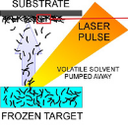
Researchers have used, for the first time, a combination of cerium oxide nanoparticles and manganese metal organic precursor in the laser targets for the synthesis of a hybrid material. The used laser deposition technique allowed the versatile fabrication of high-performance supercapacitor electrodes. Supercapacitors are important for their fast and reversible use of energy, high power density, long cycle life, low maintenance cost, and environment-friendly nature. Measurements at the MIRAS beamline of ALBA allowed the identification of the organic part of the composite, especially the chemical groups present at the structure of graphene and carbon nanotubes, which highly influence the functional properties of the material.
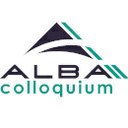
This series of talks has been successfully launched with the aim of sharing ideas and discuss the scientific needs of the upgrade project of the ALBA Synchrotron (ALBA II). The first session was held the last 25th January, resulting in an enlightening discussion with more than 60 participants. Eva Cunha, from the University of Oslo - Centre for Molecular Medicine Norway -, gave a talk about cryogenic electron microscopy.
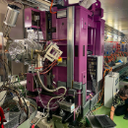
On the first days of this winter shutdown, the photon source for XAIRA beamline was installed in the ALBA accelerator tunnel. This is the longest undulator ever installed at the Synchrotron, with a magnetic length of 2.3 metres and housing 115 magnetic periods. XAIRA is the new microfocus beamline, dedicated to challenging Macromolecular Crystallography (MX) experiments. This project is co-funded by the European Regional Development Fund (ERDF).

Scientist from Universitat Politècnica de Catalunya have studied the materials and methods used in the production of modernist (late 19th and early 20th century) stained glass from the city of Barcelona, with special regards to the degradation mechanisms. The results of the research are presented today by Martí Beltrán González in his thesis directed by Trinitat Pradell. The data obtained at MSPD beamline of ALBA was key to deciphering the structure and composition of the glazes used in the stained glass windows, as well as their state of conservation, with the aim of improving the preservation of this cultural heritage.
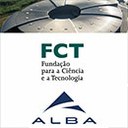
Till the 25th of January, ALBA is receiving proposals for collaborative projects between Portuguese research centers or universities and scientific areas of ALBA. Four postdoctoral positions within this Iberian collaboration will be based at ALBA premises.




